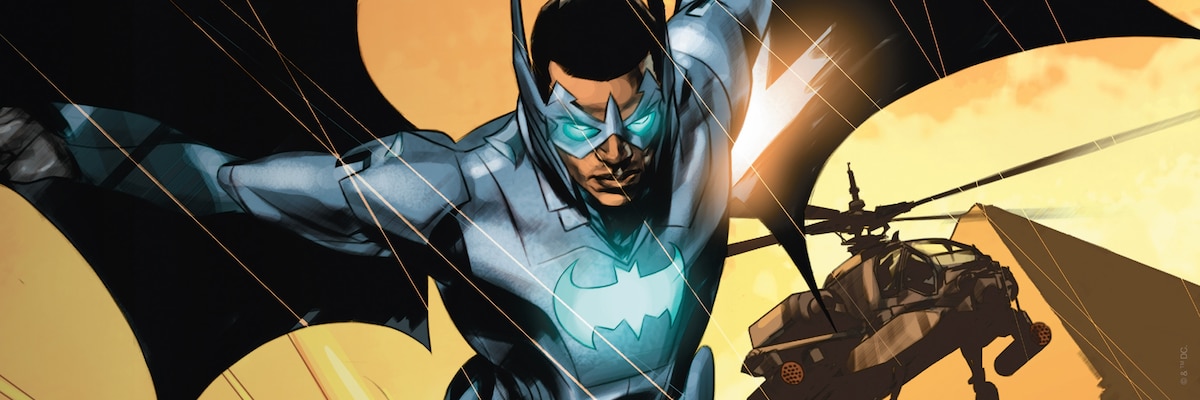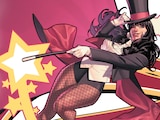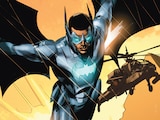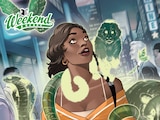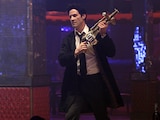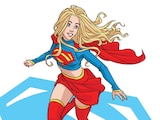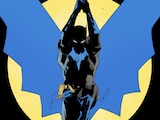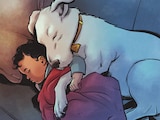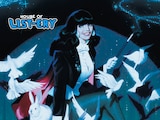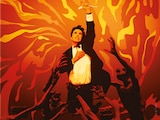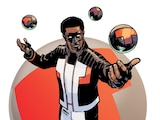When we talk about Batwing today, most Batman readers picture Luke Fox, son of Bruce Wayne’s close confidante Lucius Fox, who fights crime alongside the Bat-Family in a high tech Batsuit. (Well, that, or Batman’s plane.) But before Luke, there was another Batwing—a perhaps more ambitious take on the concept, built for an era with a desire to take the symbol of the Bat to an international stage. He was a character who got a big swing at the start of a new publishing initiative, was given a backdrop in a place where western comics rarely go, and then quietly disappeared for a decade. But there are those among us who still remember his name: David Zavimbe, the Batwing of Tinasha.
In the rare cases that early western comics made overtures towards multicultural perspectives at all, such efforts were usually colored with an “It’s a Small World”-style approach, reducing non-white, non-American cultures to broad stereotypes. One of the worst recurring cases of this, historically, has been any time that the many peoples of the African continent have been depicted. Take a look at any 20th century comic depicting scenes from around the world. How often, when it comes to addressing an entire continent, are the scenes labeled simply as “Africa?” As if every nation, every history therein, were the same? It’s far too much.
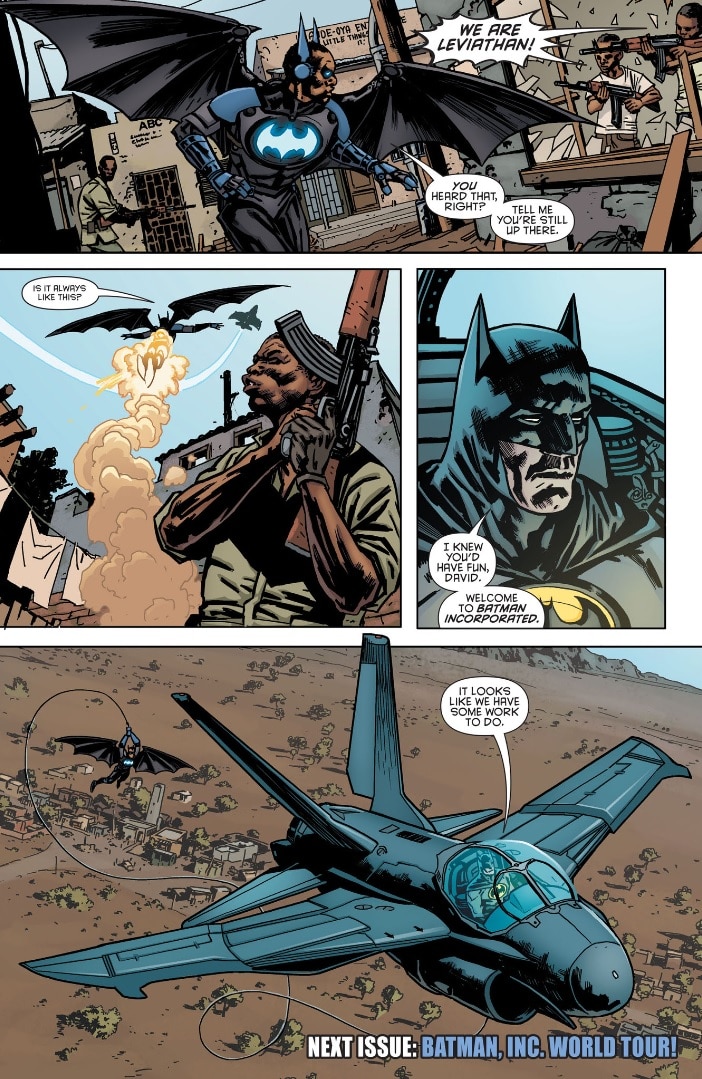
In 2011, writer Grant Morrison’s ambition to escalate the symbol of the Bat to an international stage was a lofty one. Their initial attempt at including any representation of Black cultures fell a little short. They invented “David Zavimbi,” a new hero from the fictional African nation of “Mtamba,” to represent the entire continent. Never mind that the actual Batman is only responsible for a city. Batman Incorporated’s new “Batwing,” in these initial appearances from Batman Incorporated #5-6, was apparently responsible for 11.7 million square miles of land shared by 54 countries.
It was Judd Winick and Ben Oliver who came aboard to reapply Batwing’s mission on a more reasonable scale. With the New 52 initiative later that year, Batwing became the first member of Batman Incorporated to get his own ongoing title. Renamed David Zavimbe, Batwing’s homeland was defictionalized as the Democratic Republic of the Congo. With delicate attention to detail and the greatest of intentions, Winick and company used their Batwing to bring attention to the specific challenges of life in the DRC. Just as Gotham City stands as a cipher for crime in American cities, David Zavimbe’s city of Tinasha brought attention to scarcity, child endangerment, gang violence and many more challenges to a region that finds itself too often without attention.
Like Batman, David Zavimbe’s path towards the Bat began when he was a child. Losing his parents at a young age to the AIDS epidemic, David and his brother Isaac were enlisted along with the many orphans of Tinasha by the warlord General Keita in his private militia, the Army of the Dawn. When General Keita threw Isaac from a cliff for failing to follow an order to execute women and children, David made his escape from the Army of the Dawn, rededicating himself to providing for others the justice his family was denied. It’s as a dedicated police officer in Tinasha that David was approached by Batman to join his new international team of heroes, offering to share his resources with the idealistic crimefighter.
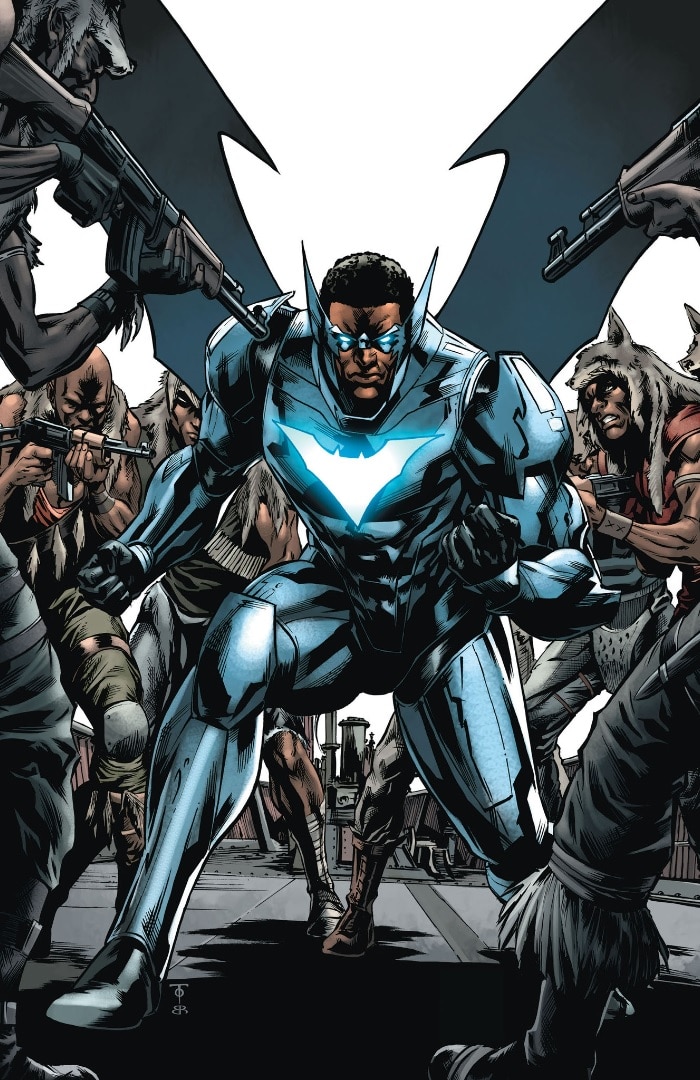
In his tenure as Batwing, David Zavimbe deposed dictators and death cults, battled modern day pirates, connected with the legacies of forgotten Congolese heroes, reunited with his lost brother (now the serial killer Massacre), backed up the Bat-Family in Gotham City during the Night of Owls and even briefly joined Justice League International before it disbanded. For over a year, Batwing was one of the most prominent international heroes in the DC Universe.
Then, after fourteen issues, series originator Judd Winick left the book to focus on his own work. After a fill-in story by Fabian Nicieza, the writing team of Justin Gray and Jimmy Palmiotti were brought on with Batwing #19 with a mission to bring the series closer to Gotham, featuring a new protagonist with more connection to Batman himself. But whatever happened to David Zavimbe?
After escaping the Army of the Dawn, the young David Zavimbe was brought in by a man named Matu Ba, the founder of a rescue program for child soldiers. Matu Ba would be David’s closest ally, confidante and even a father figure in the years to come, serving much the same role for David’s Batwing as Alfred had for Batman. Tragically, in Batwing #18, Matu Ba sustained critical injuries in an attack by a villain known as Sky-Pirate and died in the following issue. After taking his revenge on Sky-Pirate, leaving him for dead in the ruins of his airship, Zavimbe retired from the police force and returned his Batwing equipment to Batman, seeking a new path without his mentor. Batman, on his end, told David he was welcome back to the fold whenever he was ready.
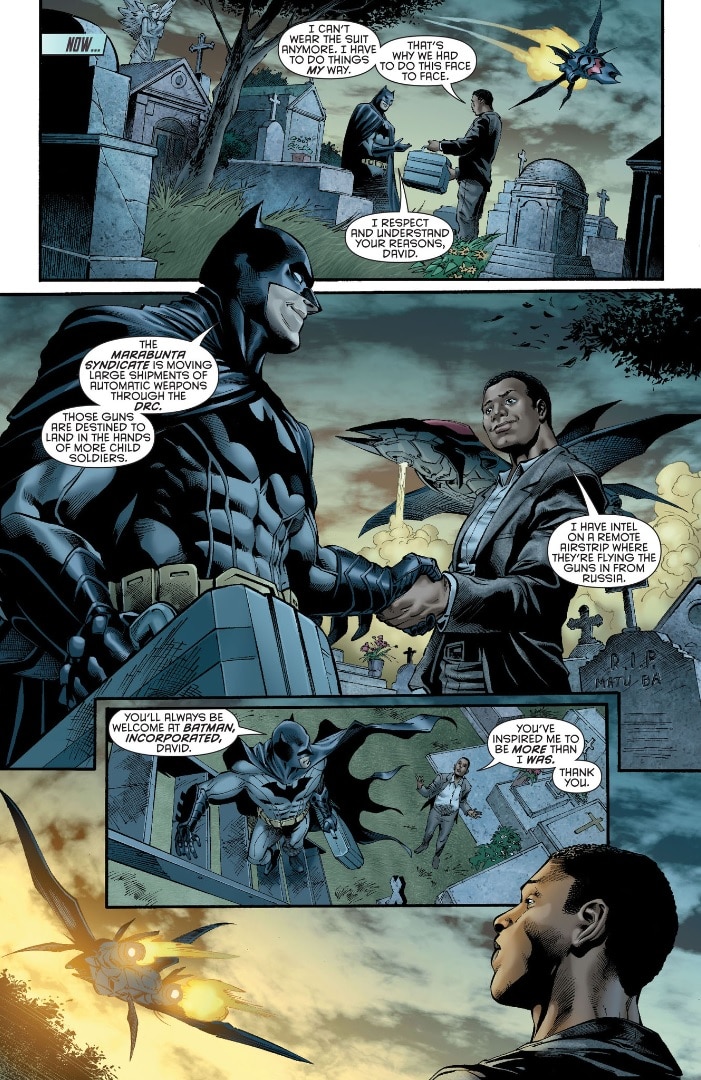
Ten years passed. With the rise of Luke Fox as the new Batwing, representing the character in Batman: Bad Blood and the live action Batwoman television series, those who still remembered David weren’t sure we’d ever see him again. That changed in 2023, with Titans: Beast World: Waller Rising. In the middle of the Beast World event, we learn that David has been in contact with Luke Fox for some time since we last saw him, both operating as Batwing in their own capacities on opposite sides of the world. Called to action in the crisis du jour, Batwing returned to the fore alongside Vixen, Black Manta, Doctor Mist and Val-Zod, the Superman of Earth-2, against the forces of Doctor Hate. By the end of their team-up, Vixen, David and Queen Nubia would draft a proposal to form a new global cooperative of Black heroes. David would call it “the Network.”
We haven’t seen much of the Network in the year since, but as was the case for David himself, there’s nothing to suggest they aren’t out there. As with so many promising Black heroes in the DC Universe, this is an ongoing story. The next chapter can come at any time.
Alex Jaffe is the author of our monthly "Ask the Question" column and writes about TV, movies, comics and superhero history for DC.com. Follow him on Bluesky at @AlexJaffe and find him in the DC Official Discord server as HubCityQuestion.
NOTE: The views and opinions expressed in this feature are solely those of Alex Jaffe and do not necessarily reflect those of DC or Warner Bros. Discovery, nor should they be read as confirmation or denial of future DC plans.
